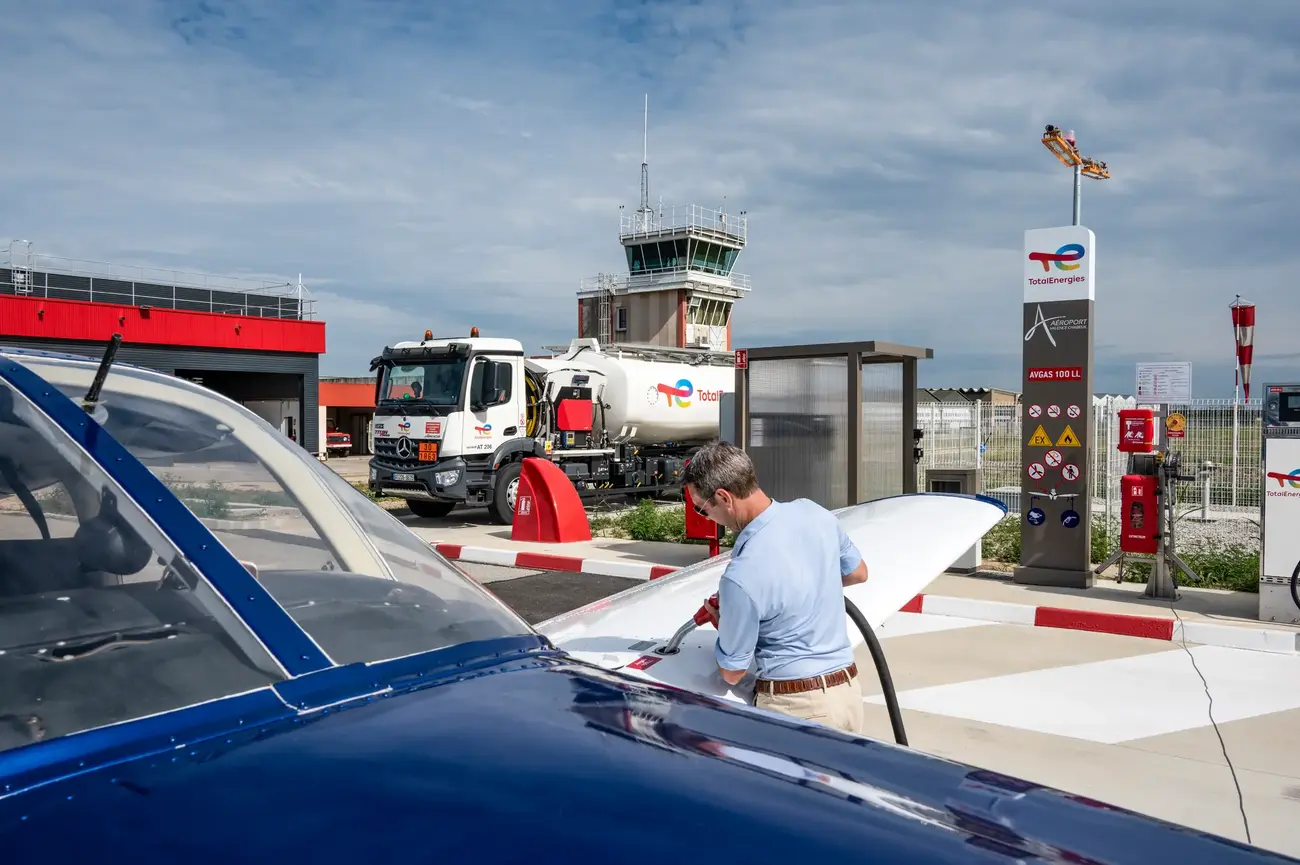Are you familiar with sustainable aviation fuel (SAF)?
SAF is the term used by the aviation industry to describe an alternative fuel made from sustainable raw materials.
Sustainable Aviation Fuels (SAF): a lever for reducing emissions from the aviation sector
Sustainable aviation fuels are one of the solutions immediately available for reducing CO2 emissions from air transport. They have the advantage of being able to be incorporated without modifying the logistical infrastructures for storage and distribution, aircraft or existing engines.
Before blending, FAS enable CO2 emissions to be reduced by up to 90%, over their entire life cycle, compared with a fossil fuel equivalent*.
In practice, they are blended with fossil fuels up to a maximum of 50% before being refuelled in aircraft.
* in application of the methodology described in the European RED II directive
-
Reduction in CO2 emissions
-
Compatible with current aircraft and infrastructure
-
An offer available now
-
Compliant with European regulations (RED II)
TotalEnergies: SAF producer
At TotalEnergies, we focus on two production routes for SAF:
- The first route, HEFA, begins with the production of SAF in a biorefinery. The SAF thus produced is transported to a dedicated storage site and then blended with conventional jet fuel, up to a maximum of 50%, to become an alternative air fuel containing SAF.
- The second option is co-processing, which involves introducing a biobased feedstock into the units of a conventional refinery in addition to the usual fossil feedstock. At the end of the refining process, you then end up with an alternative air fuel that has already been blended.
The SAF family also includes e-fuels, synthetic fuels produced from hydrogen, ideally derived from renewable electricity, and CO2, which can be extracted from ambient air or industrial effluents. These technologies, currently at the R&D stage, are still extremely costly, but could become a particularly promising avenue in the longer term.
TotalEnergies: a pioneer in SAF
For more than 10 years, TotalEnergies has been involved in a number of initiatives to promote the production and development of sustainable aviation fuels, in partnership with major players in the market. In 2021, we began producing SAF in France.
By 2028, TotalEnergies will be able to produce more than half a million tonnes a year of sustainable aviation fuels to meet the European mandate of 6% incorporation by 2030. TotalEnergies will be able to supply more than 10% of the jet fuel it markets in Europe with SAF, ahead of this mandate.
TotalEnergies is mobilised to meet the strong demand from the aviation sector to reduce its carbon footprint. SAFs are essential for immediately reducing the CO2 emissions of air transport and their development is fully in line with our approach to carbon neutrality, together with society
Chairman and CEO of TotalEnergies
TotalEnergies supplying SAF for its aviation customers
TotalEnergies has been involved in a number of initiatives since 2014. These have intensified significantly in 2021, with several national ‘firsts’ - the first delivery of SAF to Charles de Gaulle airport, the first permanent offer of SAF at Le Bourget - and worldwide - the first flights with 100% SAF of an Airbus helicopter powered by Safran in Marignane and an Airbus A319Neo in Toulouse.
TotalEnergies is also forging partnerships with aerospace manufacturers to accelerate the decarbonisation of the sector. These partnerships play a key role in understanding the impact of the composition of sustainable aviation fuels on aircraft, particularly for incorporation rates of over 50%. These include
- A partnership with Airbus, signed in 2024, covers the supply of SAF for more than half of its needs in Europe and a joint R&D program to develop 100% sustainable fuels.
- A partnership with Safran, initiated in 2021, which has led to the formulation of an SAF that is fully compatible with the aircraft fleets currently in service and, in February 2023, to the flight of an army helicopter using this SAF.
In pictures: Discover how TotalEnergies produces and distributes SAF
In this video, find out how TotalEnergies develops, produces and deploys sustainable aviation fuel (SAF) in the field. From environmental issues to industrial solutions, follow the key stages of this transition.
We answer your questions

The TotalEnergies Aviation fuel offering
TotalEnergies distributes a complete range of aviation fuels suitable for all types of aircraft: AVGAS 100LL, UL91, UL AERO SUPER+, JET A-1 and sustainable aviation fuels (SAF). Thanks to our expertise and international network, we can help you get your passion off the ground.


